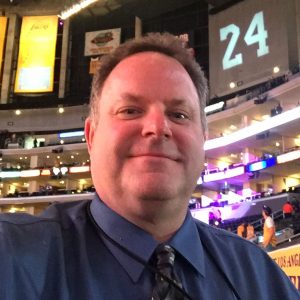Tech Focus: Radio, Part 1 — A Slow Transition to Digital
Analog still rules for many sports-radio remotes
Story Highlights
The seminal year for sports on the air was 1921, when KDKA Pittsburgh broadcast live radio coverage of a 10-round boxing match — the first live sports broadcast in history. In August that year, the station also aired a baseball game between the Pittsburgh Pirates and the Philadelphia Phillies from Forbes Field and, in October, the first live college-football radio broadcast, calling the University of Pittsburgh against West Virginia University. Television, on the other hand, had to wait until 1939 for NBC’s airing of a college baseball game between the Columbia Lions and Princeton Tigers from Columbia’s Baker Field.
Radio has certainly made its own technology strides since then, but a network A1 from 50 years ago would likely feel right at home at the helm of most radio remotes today, where analog still tends to be the rule. Basically, all radio needs is a good microphone, someone who knows how to properly balance levels and build a gain structure, and a good connection to the plant.

Engineer Michael Dooley: “The move to digital has opened up a lot more possibilities, but there’s still something very comforting about analog.”
Freelance engineer Michael Dooley, who has worked on hundreds of remote broadcasts for various radio stations over the past 30 years, including the ESPN LA 710 broadcasts of Los Angeles Lakers games from the Staples Center since 2004, is typical: he made the jump to digital only last year.
He replaced his trusty Mackie 1604 mixer with a 16-channel Yamaha TF1 digital desk and added five Dante-enabled, hybrid digital/analog Studio Technologies Model 205 announcer consoles. But the Mackie 1604 remains in a closet near the media table Dooley works from at the Staples Center — wired, labeled, and ready to go “just in case.”
“The move to digital has opened up a lot more possibilities in terms of what you can do on location, and it sounds great,” he says. “But there’s still something very comforting about analog. It still works well after all these years.”
No More ISDN
For the Lakers broadcasts, Dooley has the unique ability to connect to the flagship station using fiber interconnectivity (ESPN’s plant is across the street). But, for other remote broadcasts, a Comrex 2USB codec is the norm, since ISDN lines are now all but nonexistent.
“ISDN is pretty much gone by now, replaced by IP and codecs,” he says. “That part has moved into digital, but the rest of it has remained largely analog. Using the Dante connectivity, I’m able to set up a five-position broadcast area that doesn’t use any XLR cables. The combination of built-in compressors and clean mic preamps gives me superb audio from each announcer. It works flawlessly within my new broadcast workflow.”
Dooley, who is also stadium engineer for the MLS LAFC team at Banc of California Stadium, uses the Model 205 announcer consoles for the two ESPN radio commentators, the producer, the statistician, and one backup position at the Lakers games; two more lines are used for the broadcast’s halftime host and game-end interviews on the court. Those are done using a combination of Sennheiser headsets and wireless gear. The radio show also takes PA and effects feeds from the television trucks that put the game’s sneaker squeaks and basket bangs into the radio broadcast. All this is easier with a digital console, says Dooley, noting that it lets him have processing like EQ and comp/limiting from within the mixer instead of having to rely on outboard gear.
“I now have EQ for each channel, as well as noise gates, which really help keep the sound from the court much cleaner,” he explains, as does the Dugan automixing firmware integrated into the TF series console. “There’s also a second loop I use for talkback that lets the producer talk with the station while we’re on the air. Before, we had to wait until we had a [commercial] break, because there weren’t enough I/Os.”
Nonetheless, Dooley’s digital conversion came seemingly late in the game, in an industry that traded waveforms for zeroes and ones nearly three decades ago. He cites the higher cost of some of the specialized digital gear, which hasn’t benefited from Moore’s Law nearly as much as more commonly used digital audio products, as well digital’s learning curve: many radio A1s have been working in the field for decades and are simply more comfortable with analog. Moreover, there are few dynamics arguing against leaving the analog domain for radio remotes.
“There are a lot of advantages to digital, such as putting everything on a Dante network,” says Dooley, who describes himself as one of just two radio remote-broadcast engineers in the Los Angeles area who have moved to digital systems. “I’m in a unique position. Analog sounds and works great, but it limits your capabilities. [Digital] can be a lot to learn, but, once you’re set up, it’s so much easier and better. Radio just hasn’t evolved as fast as television.”
Click here for Tech Focus: Radio, Part 2 — Audio-Only Consoles Meet Sports-Broadcast Needs
